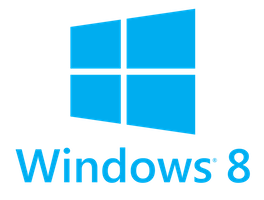We’re all a part of unprecedented times. The computing choices around us are are almost as varied as our interests for consuming and creating information. One new choice on the horizon will be Windows 8, and the certain upheaval it represents. Much has been made of this new version of Windows (available October 26), and how many will not “get it” and fewer still will shell out cash to purchase the product that almost no one likes. I think this is a sound theory since Windows 8 is almost universally being panned. Even the expected positive review from Walt Mossberg is, well, not so much.
On top of all that, Microsoft is creating quite a bit of confusion – mainly with the Surface and Windows RT product. This Tablet is going be using an Operating System and CPU that will not run the vast majority of Windows applications. Given that the Windows RT user can only really run Office 2013 (pre-installed on the Surface) and most “Metro-Style” applications that are not nearly as plentiful as any “App Store” out there. You’ve got a recipe for confusion and disappointment. Paul Thurott gives a good rundown of what is, and isn’t included with Windows RT. He says:
“Windows RT is not a computer operating system. Windows RT is an operating system for mobile devices.“
Apparently, based on his inbox, lots and lots of people don’t get that.
What’s at issue here is not a technical one. Sure, a lack of apps is a real problem that Microsoft needs developers to solve (and that will take time). But, the biggest problem with Windows 8 is the confusion it causes. Microsoft is a making a clear move into the mobile space by making something that seems more like an “everything” play, hoping something will stick. The trouble is, what doesn’t stick – you’re stuck with – and even worse, might not know what to do with it.
Interesting Update: As the Windows 8 launch date has the operating system sitting on shelves, we’re able to get a better understanding of what’s being sold. Another point of confusion is how Microsoft is naming Windows 8. Currently, you can get a copy (product code WN7-00404, OEM) of the basic version named “Windows 8“. If you want the version of Windows that joins a domain (product code: FQC-05956) it’s called “Windows 8 Pro“.
I can see a number of people being confused by this naming method – wondering if the version they have includes certain features or not. In the past, Microsoft named Windows with “Home” or “Home Premium” and it was immediately clear what users weren’t getting.
The average Windows user just wants to get things done. I witness time and time again users that are confused by different versions of Office on the same computer, issues of file associations, and just the basic ideas of file systems and folders. Indeed, most business users of Windows aren’t built with a mind that thinks of hierarchical files systems naturally. These people aren’t stupid, they’re just trying to get things done. Probably one of the biggest types of confusion I see in users comes from Remote Desktop. This service gives a user access to another Windows computer by showing the user a desktop from the remote computer. Many users have serious trouble with this concept – not knowing where applications or files are located, which desktop applications run on, or why they “can’t just print everywhere“. Now, everyone is going to have to face the confusion that comes from “Metro App” or “Desktop App” and understanding where they run and what was purchased. Confusion.
Microsoft is clearly hoping that this won’t be the case – but my experience with users says otherwise. If that doesn’t happen, what will we be calling this new Operating System? Windows Hate? Windows Mistake? Windows Discombobulate?
